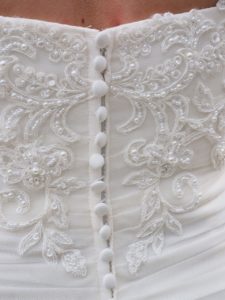 As a wedding gown designer, you can bet your bottom dollar that I know all about the color white. Without tooting my own horn too badly, I can assert that I am a veritable expert on whites, to the extent that I can rattle off quite a few shades of the color – yes, white has shades – including white, white smoke, snow, honeydew, mint cream, azure, Alice blue, ghost white, seashell, beige, old lace, floral white, ivory, antique white, linen, and lavender blush. And I won’t even go into the plethora of off-whites and their own shades.
As a wedding gown designer, you can bet your bottom dollar that I know all about the color white. Without tooting my own horn too badly, I can assert that I am a veritable expert on whites, to the extent that I can rattle off quite a few shades of the color – yes, white has shades – including white, white smoke, snow, honeydew, mint cream, azure, Alice blue, ghost white, seashell, beige, old lace, floral white, ivory, antique white, linen, and lavender blush. And I won’t even go into the plethora of off-whites and their own shades.
(You Santas out there reading the blog, don’t worry; I’m equally well versed in the different hues of red, but that’s for another time.)
This topic came to me because – as you may or may not know – we recently had a death in the family, and for some odd reason I remembered that, for the longest time, white was the color of mourning, not celebration. You can most likely thank Queen Victoria for starting the trend when she wore a white lace and silk-satin gown when she married Prince Albert in 1840. The outrage it inspired was – according to reports – considerable, but that didn’t stop dozens, hundreds, then countless thousands brides from copying her in the following years.
I sometimes wonder what life for me as a seamstress might have been if Old Vicky had stuck with tradition and gone with a colored gown. It’s easy to envision a wedding industry turned on its ear due to the myriad of options in flowers, decorations, and even bridesmaids dresses when they’re not depending on the base, central color of white.
Actually, across the globe, colored wedding gowns are still en vogue. Chinese brides get to start off in a red gown – signifying the local color of joy and luck – then get a second ceremony in a white gown and then finally a third in a color of their choice. In Spain, they go for black gowns that signify staying with their husbands until death. Morrocan brides – for better or worse – wear bright yellow, a color that is supposed to scare away evil spirits and – presumably – traditional seamstresses. Koreans overlay their own white gowns in lime green, and in India the colors of the rainbow are fair game for a traditional wedding dress.
In closing, I also can’t help but wonder what kind of world it would be if we retained the color white as our traditional color of mourning. Step outside of real life and think of every movie that has a funeral scene with somber blacks and cloudy skies. Maybe, just maybe, the light and bright colors would instead help us through those dark times.
Until next time!
Heather

